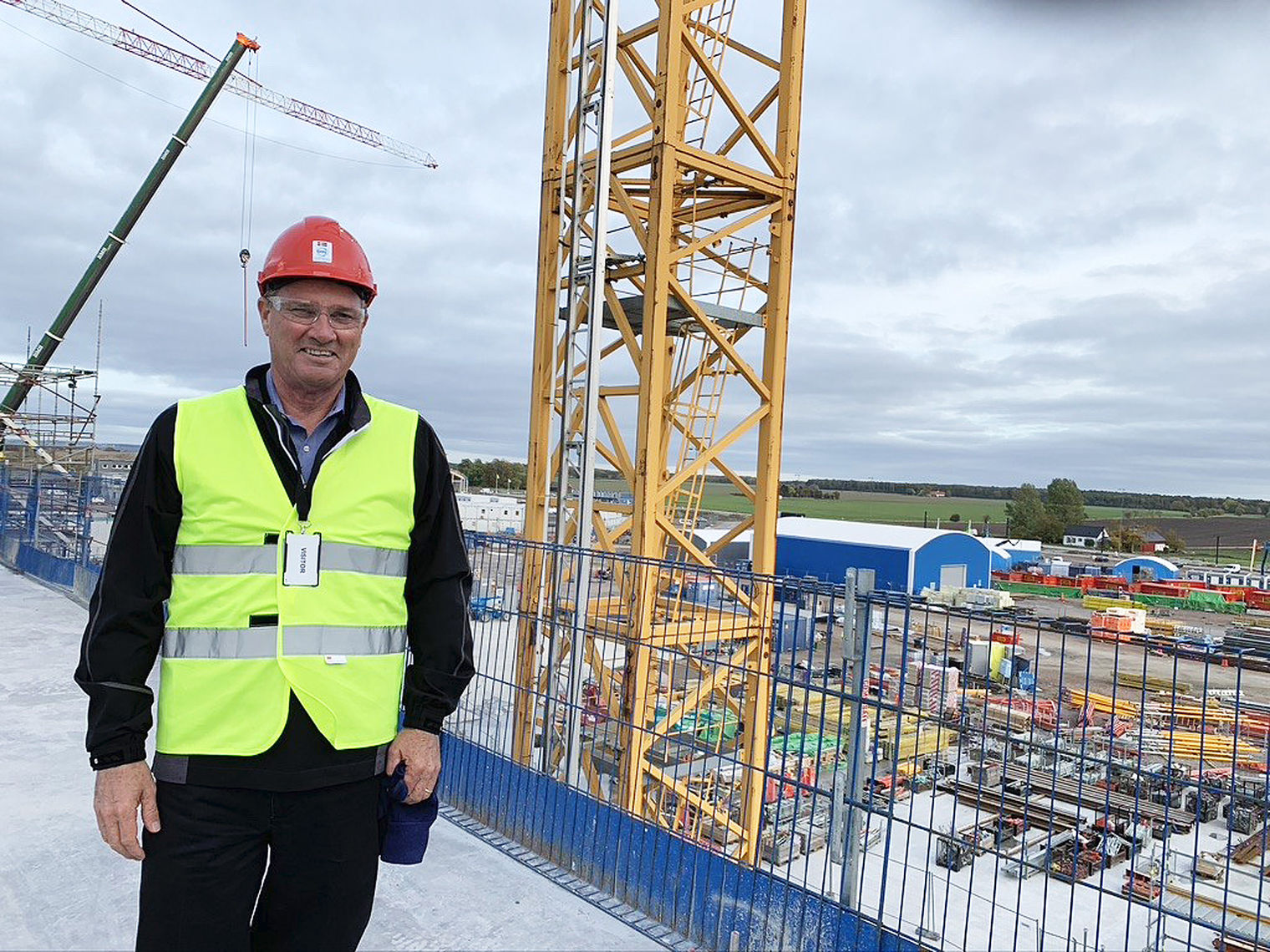
Large science facilities like ESS are huge, complex projects which take the dedication of hundreds, if not thousands of people to complete. ESS is also unique in many ways as there are two host countries and a large number of in-kind contributors involved. To keep the project on track, the ESS Council has appointed an external Project Advisory Committee, or PAC, dedicated to offering constructive advice and recommendations based upon experience from other facilities.
With any project, it always helps to get an external perspective from experts who have built similar facilities. Getting a view from the outside often leads to new insights, new ways of thinking and, ultimately, new solutions to challenges.
The ESS Council recognises this and has formed various advisory committees, made up from experts in their respective fields, for different aspects of the ESS project. One of these crucial committees is the PAC.
“The role of the PAC is advisory,” says Mark Reichanadter, chair of the PAC. “The PAC membership has extensive experience in construction and operations of large science facilities in both Europe and the US, and we do our best to bring that into the ESS project in a positive way. We focus on the construction phase and the transition into an operating neutron science facility, and between us we have experience from similar facilities like DESY, Brookhaven and CERN.”
The PAC was formed at the beginning of 2019, with the primary goal of offering advice and guidance on the ESS management team’s execution plans, and how to keep the project as close to its schedule as possible. The committee and the ESS Council have an open, transparent dialogue, and meet three times each year.
The PAC also serves as an independent audit or assurance to the Council, which is especially useful for a big, complex project like ESS. The Council can ask the PAC to look at specific areas where it feels more focus is required, and the PAC can provide its independent observations and recommendations for improvement. The key to the relationship is open and candid discussion of the issues between the ESS management team and the PAC.
Unique challenges
ESS is one of many large scientific facilities constructed around the world, so there are many lessons to be learned from both the failures and successes of those that have been built before. However, it’s not only the fact that ESS will be the most powerful neutron research facility in the world that makes it unique.
“ESS isn’t affiliated with a large (host) institution, like the Large Hadron Collider (LHC) is affiliate with CERN, for example,” explains Mark. “so ESS doesn’t have existing support structure and processes to rely on – everything is being built from scratch in what is sometimes called a “greenfield” project. This presents many new challenges, as it’s not only the construction and laboratory projects that you need to consider, but everything that goes with running a facility. Financial, HR and Legal policies need to be established, and in addition, ESS relies heavily on in-kind contributions from its many European partners.”
The in-kind contributions and partnerships were the first area of focus for the PAC, as so much of the project relies on these deliveries being made in a timely, efficient way. In-kind deliveries come from all over the world and can account for anything from specific parts to entire instruments, so effective management and coordination is critical.
“ESS is a European partnership, and relies heavily on its in-kind contributions,” adds Mark. “My experience from working with the LHC construction taught me the importance of effectively coordinating these contributions. ESS management must be very active and visit sites regularly to make sure everything is going as planned. There must be a lot of interaction between ESS and the in-kind partner. The ESS team was already doing this, but the PAC recommended more emphasis on in-kind following our first meetings.”
As a result of these initial meetings, the PAC also recommended that ESS focus more on the construction side of the project, and staying to the planned schedule. This was primarily because schedule delays can be extremely costly.
“Construction projects like ESS are huge investments,” says Mark. “Because delays can be so costly, we made significant recommendations to recognise and prioritise the ESS construction work leading up to First Science (neutrons on the ESS Target and Instruments). These recommendations were accepted by the ESS Council, and we have seen great progress since, with many buildings being turned over.”
A positive force
Although the PAC tries to identify where improvements can be made, the PAC is very much dedicated to operating as a positive, helpful presence in the ESS project.
Mark says. “The PAC is here to help, and the whole committee is dedicated to offering constructive, helpful feedback and well-informed recommendations. We can be very tough in some instances, but ultimately, we want to help improve overall project performance, and get to First Science as soon as possible. In this respect, the PAC is strongly aligned with the ESS Council and ESS management team.”
There are always new challenges to address and difficult decisions to be made, and the PAC will continue to play an important role in this regard. The external perspectives of the committee have already helped streamline and optimise the project in a number of areas, and the goal is to continue on the same path which will result in the ground-breaking science anticipated around the world.
“The scale, scope and complexity of ESS is very ambitious.” Mark concludes, “and with in-kind equipment from many different countries, and a distributed and diverse work force, ESS is expected to have some challenges on its way to becoming the world’s most powerful neutron science. The PAC is committed to helping make ESS a success.”
























